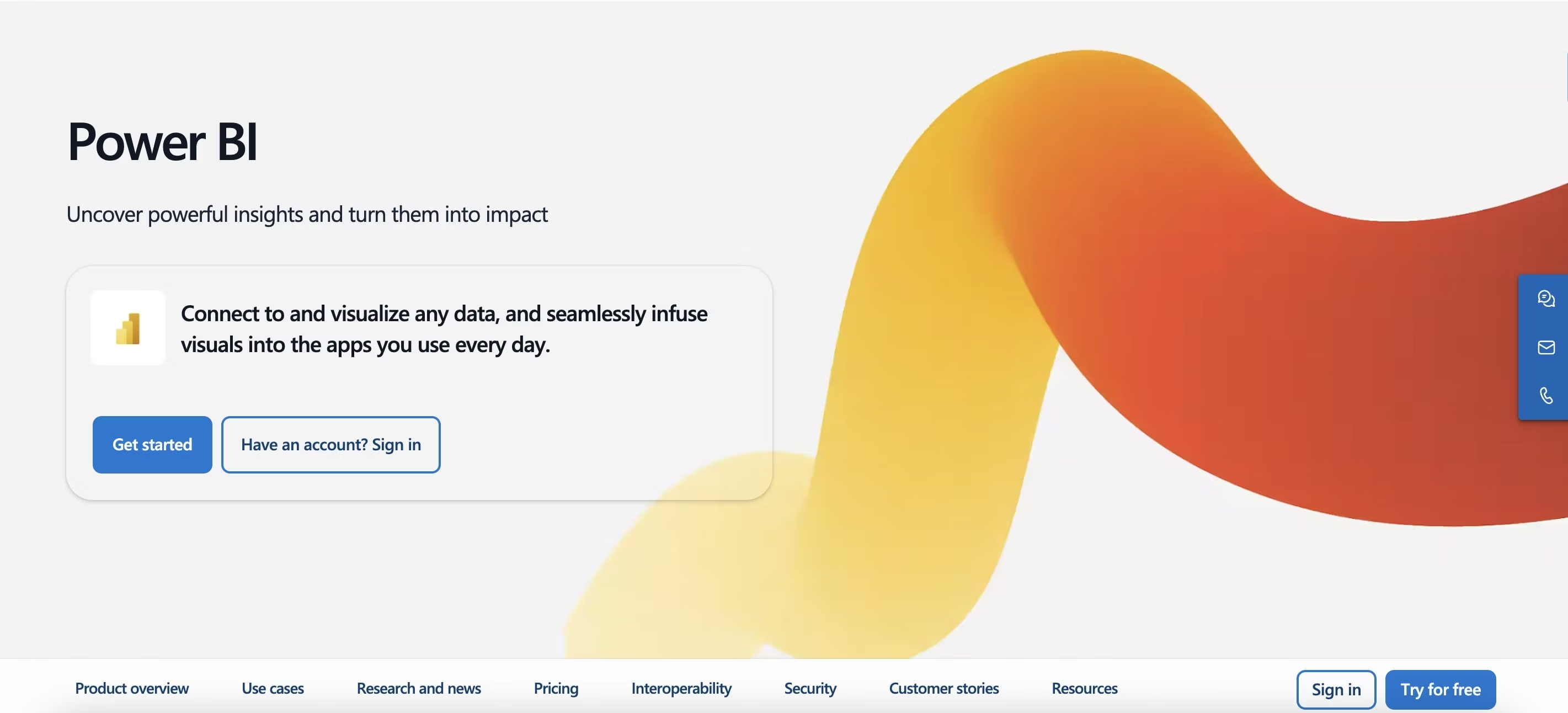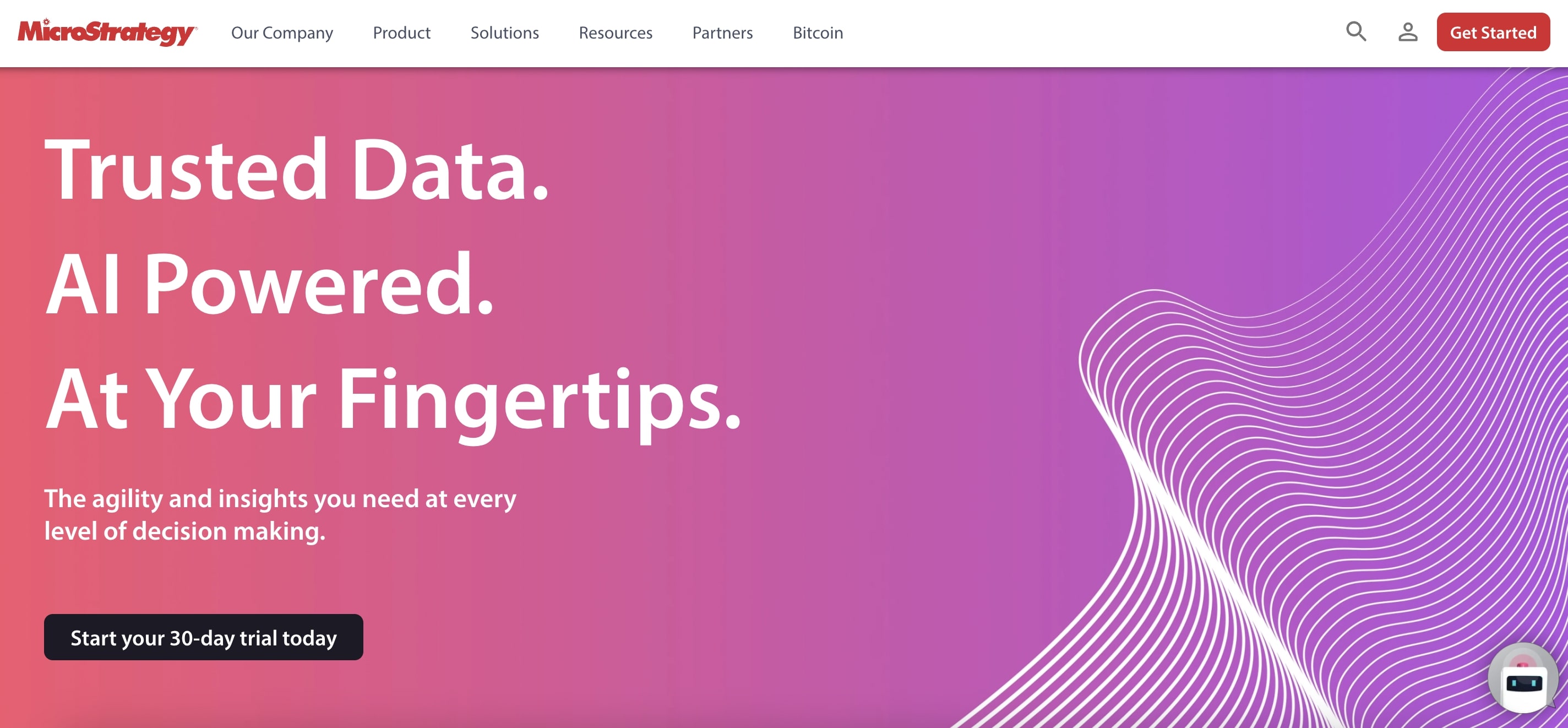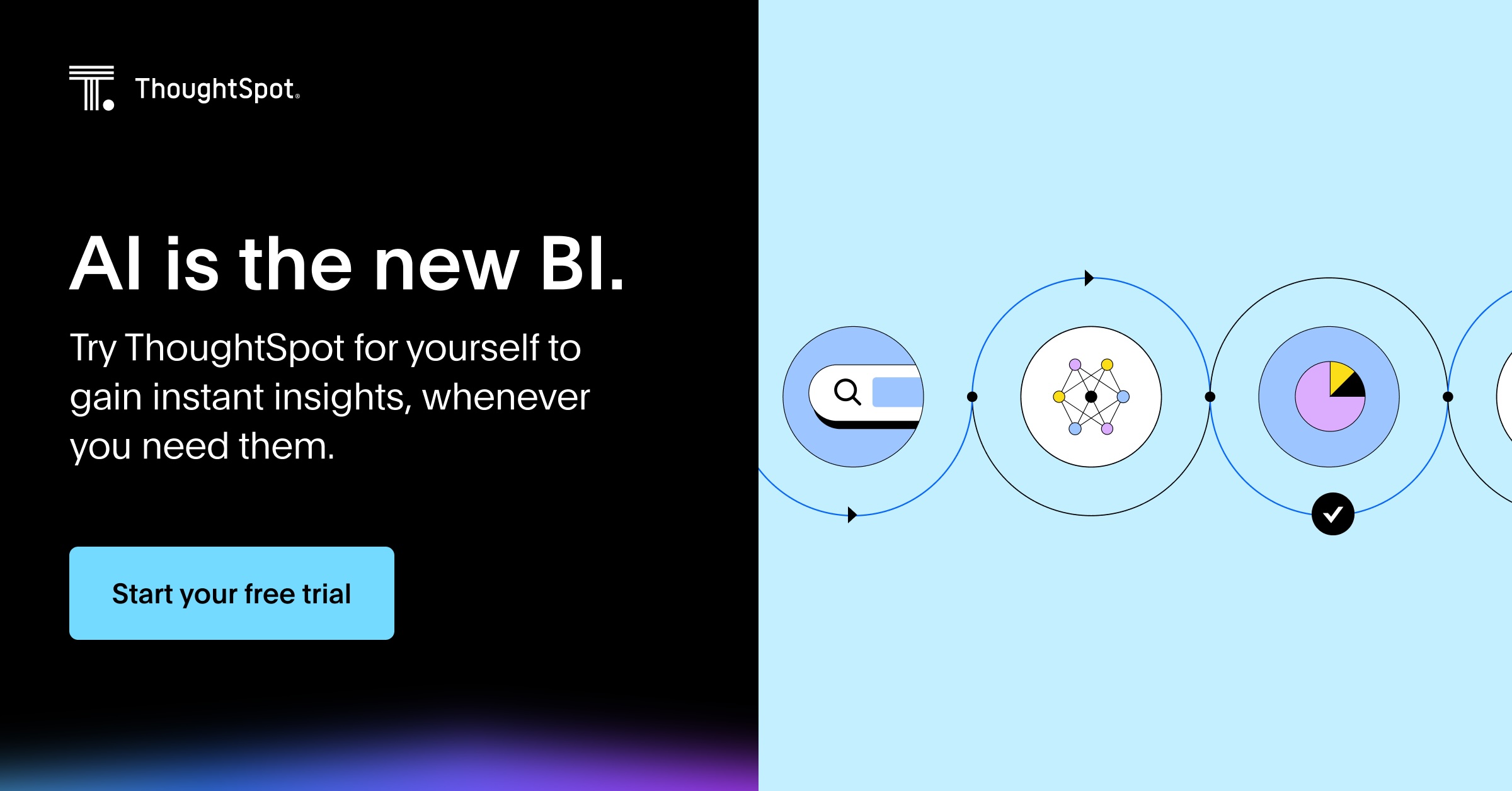Every data leader today is in a race—striving to extract the maximum value from their data and AI investments to gain a competitive edge. Yet, despite their best efforts, research shows only one-third (33%) of them are truly satisfied with their enterprise’s use of analytics and data.
The reason? They’re overlooking a crucial component—the product’s strategic fit. If your data stack doesn’t support broader goals, including how it can add value to your business teams, you’re not only missing out on growth opportunities but also wasting valuable resources.
This is why partnering with the right business intelligence (BI) vendor matters. A seasoned, trusted vendor helps you build a data ecosystem that can handle the complexity and scale of your enterprise data and deliver actionable insights, right where it matters.
The question isn’t whether you need data analytics—it’s how to find the right business intelligence service provider to help you make the most of your data. We’ve done the heavy lifting for you, curating the top BI tools and their features to help you quickly find the best fit for your business.
Table of contents:
Alright, cards on the table: we’re a tad biased toward ThoughtSpot. But truth be told, we’re not alone here. With a stellar 4.6 rating on Gartner Peer Review and a growing list of world-class customers, ThoughtSpot offers the best-in-class AI analytics experience. As the leader in BI, ThoughtSpot offers a self-service analytics solution that allows anyone to ask complex business questions in natural language and receive decision-ready insights. Additionally, with interactive Liveboards and powerful AI features like ‘SpotIQ’, users can easily discover trends, patterns, and anomalies, giving them a real-time view of their business.
Core features
1. GenAI-powered self-analytics
ThoughtSpot stands out as a unified BI platform with a powerful AI-driven experience that empowers all users to interact with data on their own terms. For instance, with Spotter as your dedicated AI Analyst, you can ask follow-up questions, drill into any visualization, or pin findings on a Liveboard, making data exploration an engaging experience. Even advanced analytics is no longer reserved for analysts or data experts—any user can leverage SpotIQ to discover how key metrics have changed, why they have changed, and forecast trends.
2. Speed and scalability
Whether in a startup setting or a large-scale enterprise, ThoughtSpot is architected to support live data querying, helping you easily analyze complex, large datasets. The platform doesn’t require frequent data extracts, which saves time, lowers costs, and reduces dependence on analysts. You can stay on top of your cloud data while easily making sure your entire team has access to real-time insights.
See in action how you can connect ThoughtSpot instantly to a cloud data warehouse like Snowflake and run live queries across billions of rows of data:
3. Robust security and governance
As a leading BI vendor, ThoughtSpot maintains a strong focus on data governance and security. With enterprise-grade semantic layer and access controls, you can manage and enforce how data is used and accessed at your organization. ThoughtSpot also includes human-in-the-loop capabilities that ensure relevancy, accuracy, and oversight.
ThoughtSpot pros
ThoughtSpot’s intuitive interface makes data analysis effortless for everyone, even those without a technical background. With natural language search and AI insights, your team can identify important trends and anomalies in your data.
With flexible and customizable data visualizations, business teams can present findings in a way that resonates, giving stakeholders a clearer narrative.
ThoughtSpot integrates seamlessly into your existing data ecosystem, offering the flexibility to work with multiple LLMs and data sources.
ThoughtSpot cons
Some advanced features may require additional training for users to leverage their capabilities fully.
Pricing
ThoughtSpot offers three flexible pricing models designed to fit your unique needs. Here’s a quick breakdown:
The Essential plan—starts at $1295/month: Designed for small teams and businesses who want to share AI-powered insights across teams.
The Pro plan—custom pricing: Great for growing businesses that want to give everyone access to AI-powered insights. Users can analyze up to 500 million rows of data and access professional-level support at every turn.
The Enterprise plan—custom pricing: Ideal for enterprises looking to scale AI-powered analytics across their organization. This plan offers unlimited permission groups and enterprise-level security controls.
Need help choosing a plan? Talk to our team today to find the best fit for your business.
14-day free trial available
Microsoft is a major player in the business intelligence space, with Power BI as its flagship analytics solution. It’s designed to help organizations connect, visualize, and analyze data through a drag-and-drop interface. Plus, it integrates with other Microsoft tools like Microsoft 365, Azure, and Teams, making it easy for users to create dashboards and reports.
But as businesses shift to multi-cloud environments, reports show that many customers are demanding greater interoperability with other cloud data platforms. They want tools that can integrate and analyze data across diverse systems—a challenge Microsoft needs to address to maintain its edge in the BI market.

Pros
Microsoft offers an integrated ecosystem with services like Power BI, Excel, and Azure, making it ideal for organizations already using these tools.
Microsoft is an established player with a strong community of active users. Users can gain access to free tutorials and resources through fellow data enthusiasts.
Cons
The licensing structure of Microsoft products can be confusing, potentially leading to unexpected costs.
Microsoft’s Power BI has a steep learning curve. Mastering the platform’s advanced features requires extensive coding and technical expertise. For this reason, many business users find these features out of reach.
Pricing
Power BI offers four pricing tiers, based on several factors, such as the total users, the model size limit, and other premium features that may or may not be important to your business:
Power BI free plan: This individual plan allows free access to the Power BI desktop, allowing you to create dashboards and reports. However, there are many limitations, including restricted access to advanced analytical features and real-time report sharing.
Power BI Pro—$10.00 user/month: This plan is available at no extra cost for Microsoft 365 E5 and Office 365 E5 accounts, but new users must subscribe to create basic dashboards and reports.
Power BI Premium Per User—$20.00 user/month: This plan allows users to access larger model sizes with more frequent data refreshes, but as your data needs evolve your licensing cost will also increase.
Power BI embedded—variable pricing: Organizations can embed Power BI’s analytical capabilities into their applications. Pricing is primarily determined by factors such as the number of users and the specific features required.
Free trial: Available

Google entered the BI space in 2019 with its acquisition of Looker Studio, and in 2023, it raised the bar by integrating Looker Studio with the Looker semantic layer. This created a more robust platform tailored for reporting and dashboarding. Looker’s semantic layer is its standout feature, helping users structure data and define relationships between metrics and dimensions. But there’s a catch: Looker requires significant coding expertise, which makes it less accessible to business users without technical backgrounds.
Pros
The connection with Google Workspace tools, such as Slides and Sheets, enhances collaboration and data utilization.
Looker integrates with most cloud data platforms—think SQL Azure, BigQuery, Amazon Redshift, and Snowflake Data Warehouse. This allows users to access and analyze data from multiple sources.
Cons
Licensing costs for Looker can rise rapidly, as extra fees for add-on features significantly drive up overall expenses. Features such as advanced reporting or data modeling often come with additional charges.
Users on public forums have found Looker’s analytics capabilities quite limited, particularly the customization of visualizations and advanced AI features. These constraints can make it challenging for users to generate in-depth insights.
Pricing
Looker’s subscription costs can vary widely based on the deployment type (cloud or on-premises), data storage, features enabled, user roles, and the number of users, so it’s best to contact Looker directly for the most accurate pricing.
30-day free trial of Looker available

Microstrategy is another key business intelligence company, offering users a dynamic product portfolio that includes HyperIntelligence, Embedded Analytics, and other BI tools. MicroStrategy allows users to connect to cloud warehouses, build dashboards, share reports, and embed analytics in apps to streamline workflows and analyze large datasets. However, this platform has its challenges.
Microstrategy can be cost-prohibitive for smaller businesses, with licensing and implementation expenses potentially outweighing the benefits for limited use cases. Additionally, users have noted that development support is not powerful and many features require more time and technical expertise.
Pros
Microstrategy can be deployed both on-premise and on-cloud, supporting multi-cloud and diverse business application stacks.
The platform offers advanced analytics features, helping users to perform in-depth data analysis and gain actionable insights.
Cons
From initial set-up to exploring the platform’s functionalities, non-technical users require extensive training to utilize core features and use cases.
The tool may require significant computing resources, which can lead to performance issues if not properly managed.
Pricing
MicroStrategy uses a subscription-based licensing model, with costs varying significantly based on factors like deployment type (cloud or on-premises), data storage needs, enabled features, user roles, and the number of users. For the most accurate pricing tailored to your organization, it’s best to consult with their team directly.
30-day free trial available

Domo has carved a niche for itself in the BI market with its cloud-based ecosystem. Its flagship BI product provides a comprehensive suite of tools for data visualization, reporting, and augmented analytics. While Domo does feature some AI capabilities, leading industry reports like the Gartner Magic Quadrant indicate that it still lags behind competitors, especially in Natural Language Query (NLQ) functionality.
Pros
Since Domo integrates with multiple cloud warehouses and databases, businesses can consolidate disparate datasets into a single platform, streamlining data analysis.
Users have praised Domo for its robust customer support options, which include a dedicated help center, strong online community, and direct customer service representatives.
Cons
While its performance is adequate for smaller workloads, handling large datasets or complex queries is reported to be sluggish, making it less ideal for real-time or high-demand environments.
While Domo offers customization options, users looking for highly tailored dashboards may find its capabilities somewhat limiting.
Pricing
Domo offers three pricing models, based on the features you need and how you plan to utilize them. Here is a quick breakdown:
Standard plan—custom pricing: This plan includes basic reporting and dashboards, and is best suited for small businesses or individuals who work with lower data volumes.
Enterprise plan—custom pricing: As the name suggests, this plan is for mid to large-scale businesses that have higher data volumes and prefer additional dedicated support. The pricing model can become prohibitively expensive as usage scales, making scalability quite challenging.
Business critical plan—custom pricing: This premium plan is for businesses that require additional layers of security, scale, and volume.
30-day free trial available
While every vendor selection process is a bit different, here are some key things to keep in mind to make the best choice for your business:
Support and customer service
Effective support is crucial for data and business teams, especially when navigating complex analytics. For example, imagine you’re a data leader at a large retail chain and implementing a BI solution to optimize the supply chain. Your data team is tasked with integrating real-time sales data, inventory levels, and shipment information from multiple systems. During this process, the team encounters an issue where one data warehouse isn't syncing with the BI platform.
In this scenario, a business intelligence service provider with strong, responsive support can make all the difference. A dedicated customer support center will provide your team with timely troubleshooting, helping them resolve the data sync issue—whether it’s an API connection error or a data format mismatch. With this kind of support, you can tackle challenges early on and meet deadlines effectively.
Product roadmap and vision
As you look ahead, your BI tool must have the scalability and flexibility to adapt to evolving data demands, like the growing adoption of Agentic AI, advanced analytics, or new data sources. A BI vendor with a clear and innovative product roadmap will ensure your BI solution continues to provide the most value to your business.
Product positioning in the marketplace
When choosing a BI vendor, it’s important to know how their product stacks up against the competition in the market. Is the vendor recognized as a leader by independent analysts? How do existing customers perceive them in terms of innovation, reliability, and overall satisfaction?
By looking at how a BI solution compares other players in the space, you can make sure you're picking a vendor that offers competitive advantages, strong performance, and ongoing investment in its capabilities.
💡Want to choose the best BI vendor with confidence? Check out this detailed guide for a side-by-side comparison of top contenders.
Today’s businesses leverage data as a competitive advantage—especially when you bring GenAI into the picture. It’s clear that business users won’t be satisfied with basic dashboards or static reports. To truly tap into the value of your data, you need a business intelligence vendor who can:
Provide a platform built for seamless self-service, empowering all employees can access and benefit from data.
Offers enterprise-grade support, helping you create and scale new data and analytics use cases that fuel growth.
Ensure complete governance and security, so decisions are always driven by reliable, trusted data.
ThoughtSpot is that AI partner who can handle the complexity, security, and scale of your enterprise data and deliver actionable insights, right where it matters. Our AI-Powered Analytics bring your data to life, giving business leaders like you access to insights like never before.
Want to see how ThoughtSpot can impact your business? Take a demo today to experience the difference yourself.









